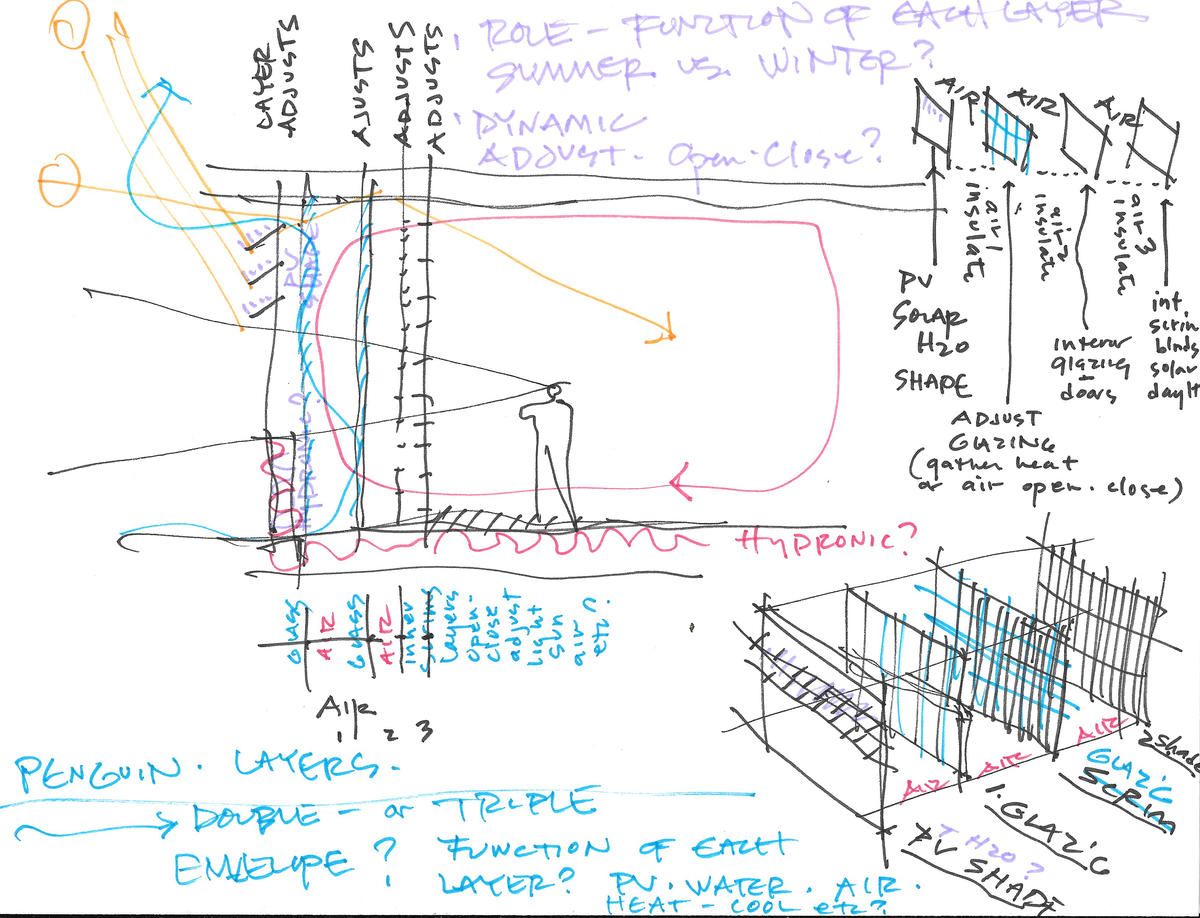"Nature is always right outside our door as a reference and touch point. We should use it far more than we do.” - Maggie Macnab
What does it mean to "Translate to Design"?
Working from the understanding developed in the exploration of biological models, the next step is to develop conceptual design diagrams that address the design challenge. The design solutions will vary based on the types of traits selected while moving from biology to design application. It is necessary to consider the translation of biological traits related to form, process, system, and material from a variety of perspectives, asking the question: How are these traits architectural? For example, a form-based trait will influence the design configuration and massing. A system-based trait will consider the larger context defined by relationships amongst the components. A material-based trait will inform the physical matter such as structure and details.
How do you "Transpose to Design"?
In the cold-climate, south-facing envelope example, the penguin feathers informed exploration of multi-functional adjustable louvers (feathers) combined with a double envelope integrated with passive and active heating and cooling systems (wing heat exchanger) (Figure 9). Concepts of iterative change (evolution), time, seasons, and dynamic response to environmental conditions were considered for passive solar heating and daylighting performance and comfort in winter. The steps below describe the biology-architecture translation process.
Step 5 Example: Translate Biological Models into Conceptual Design Strategies
- Translate functions, traits, and mechanisms for design based on criteria: What are the essential biological functions or traits to translate from biology into design? Consider form, process, system, and material translations.
- What biological attributes need to be translated (essential, accurate, relevant)?
- Be careful not to limit the design exploration by literal translation or what already exists. Explore new design models.
Bio-inspired design charette: Create iterative concept designs using images, sketches, diagrams, and notes. Revisit essential biological concepts in the scenarios to expand design thinking and translations.

